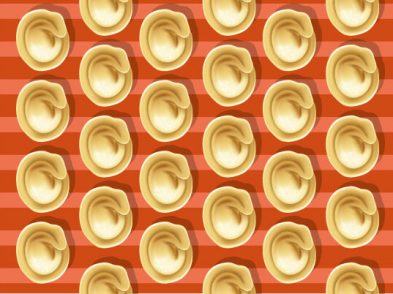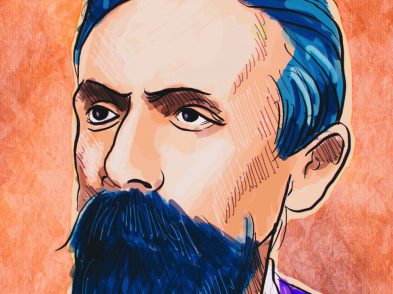A gate in the garden wall that separated the two villas at Settignano gave the two lovers the freedom and privacy to come and go as they pleased. Poet Gabriele D’Annunzio stayed in and lavishly furnished the villa called La Capponcina from 1898 until 1910, when he was forced to flee into exile in France to escape his creditors.
I
taly’s greatest actress of the Belle Époque, Elenora Duse, who paid D’Annunzio’s bills, including the rent, had bought the adjacent, more modest villa known as La Porziuncola, where she lived from 1900 until 1911.
Five years older than D’Annunzio, she had met him in Venice in 1894, and for the next decade, their relationship would not only be tormented but it would also considerably contribute to establishing his fame as a writer. Although their union was artistically productive, with D’ Annunzio writing plays like La città morta, La Gioconda and La figlia di Jorio for her, it ended in 1904 with her threatening to burn his villa down because of his innumerable affairs, because of the scandal he had provoked by revealing intimate details about their liaison in his novel, Il Fuoco and, worse still, because he had recently given a plum role to another younger actress. Devastated by his betrayal, she refused to forgive him until he was badly wounded and risked blindness after his plane was shot down during World War I.
The daughter of impoverished strolling players from Chioggia, near Venice, Duse who was born in Vigevano on October 3, 1858, while her parents were on the road. She appeared before the footlights almost as soon as she could walk. Critical recognition came in 1879, when she triumphed in Zola’s Thérèse Raquin. Small, slender with dark hair and large, sad eyes, Duse, who played roles ranging from Greek tragedy to Shakespeare and the heroines from nineteenth-century French drama, later introduced audiences to modern dramas by D’Annunzio and Ibsen.
Unlike the over-the-top theatrics then in vogue, Duse’s acting embodied an inner sensitivity that almost touched on what we know as ‘method’ acting today. She shunned makeup both on and off stage and shied away from publicity. Nonetheless, the powerful subtle simplicity of her dramatic roles caused a sensation, and she soon dominated the theatrical scene, both in Italy and on her frequent and frenetic tours abroad. ‘La Divina’ was received by both Queen Victoria and US President Cleveland. James Joyce, Anton Chekhov and Charlie Chaplin were among her admirers. George Bernard Shaw believed her talent surpassed even that of the acclaimed French actress, Sarah Bernhardt, her greatest rival.
Compared to her professional life, her personal life remained turbulent from her first romance at 20, with a journalist who seduced and abandoned her with a baby that died soon after birth. She was married only once, in 1881, to fellow actor Tebaldo Checchi. They had a daughter, Enrichetta, the following year, but the marriage was short lived. Over the years, she had many lovers, including actor Flavio Andò, whom she described as ‘a handsome man but a perfect idiot,’ and Arrigo Boito, Verdi’s librettist. She also had close friendships with women, some of them openly lesbian or bisexual, among them author Lina Poletti and dancer Isadora Duncan.
In 1909, in her 50s and unwell, Duse left the theatre. In 1916, she made a brief reappearance in the silent film Cenere, based on Grazia Deledda’s novel of the same name. It was a flop. But having lost her fortune when her bank failed during the war, Duse was forced to return to work in 1921. She began traveling again with her company throughout Italy and to England, Austria and the United States. Because of her age and failing health, she performed only twice a week but always to full houses. She was so successful that in 1923 she became the first woman to be featured on the cover of Time magazine.
During her farewell American tour, drenched by a rainstorm in Pittsburg, she caught pneumonia and died there on Easter Monday 1924. The two women with whom she was living at the time and to whom she left all she possessed, Maria Avogadro and Désirée von Wertheimstein, were at her bedside. Her death provoked a great outpouring of emotion in Italy and prompted D’Annunzio to appeal directly to Mussolini to have her body returned home. Back in Italy, she was buried in the quiet village cemetery at Asolo, in the shadow of Mount Grappa.
For the rest of his life, at the Vittoriale, his home overlooking Lake Garda, D’Annunzio kept a veil over the bust of her face sculpted at the time she had been his muse.








